When you purchase through links on our site, we may earn a commission at no additional cost to you. Learn More
There are two main scenarios where people may suspect that the gas in their ATV is bad. One is when the bike suddenly begins displaying strange, performance-related issues where the engine won’t run properly. The other is when taking the ATV out from storage after a long and harsh winter season. The ATV may not start, or you just want to make sure the gas left in the bike is still good to use.
Sometimes you can tell whether the gas is good or bad from the ATV’s symptoms when running the bike. You can also use your senses to inspect the gas to see if it shows signs of staling.
When an ATV suddenly begins displaying symptoms like difficulty starting, rough idling, or sluggishness, it may have gotten bad gas into the tank. Gas that is bad from old age smells like turpentine and becomes darker than fresh gas.
Before we take a closer look at the signs and symptoms of bad gas, it’s good to know what we mean when talking about “bad” gas or gas going bad.
While modern gas may begin to break down after only a month or two, it is still considered “good” for a long time. The gas is not regarded as bad before it causes noticeable signs of reduced engine performance.
According to NACS – a leading global fuel trading association serving as a trusted advisor to over 1,500 retailers and 1,600 supplier members from more than 50 countries, the term “bad gas” applies to fuel that won’t properly combust.
Like any other gas-powered vehicle, an ATV gets its power from a complex combustion process that requires an electric spark, compressed air, and high-quality fuel vapors to take effect.
If the spark is weak, compression is bad, or the fuel vapors for some reason do not possess the required quality, the ignition process gets interrupted, leading to poor or suboptimal engine performance.
There are several ways gas can go bad in the sense where it won’t combust properly. In ATVs, the most common is when the gas goes bad from old age or gets contamination by a foreign substance.
Gas is considered fresh produce, which can go bad over time. It’s a highly refined product made with a complex mix of many different hydrocarbons such as butane, pentane, benzene, ethylbenzene, and more.
One crucial characteristic that gasoline possesses is high volatility, which indicates how easily the fuel vaporizes. As discussed above, the combustion process requires vaporized fuel for it to burn fuel efficiently.
Over time, the lighter hydrocarbons that aid in making the gasoline highly volatile tend to evaporate, causing an imbalance in the mixture. The fuel becomes less volatile, and its ability to combust degrades until it no longer will ignite and burn properly.
While you may be able to start and run your ATV on fuel with reduced volatility, it will likely not perform as well.
While some of the lighter hydrocarbons evaporate into the air, some of the heavier hydrocarbons react with oxygen, creating new components that lead to gum and varnish deposits in the fuel lines, filters, and carburetor.
This may lead to fuel delivery issues which come on top of the poor performance caused by reduced fuel volatility.
Most of the gas sold in the USA contains Ethanol which makes up anything from 10% (E10) up to as much as 85% (E85) of the blend.
Where hydrocarbons bond with oxygen molecules, Ethanol bonds with water vapor in the air, leaving the gas contaminated with water.
Not only does water disrupt the combustion process, but it may also cause internal corrosion inside metal fuel tanks or the engine.
It’s not only from fuel that contains Ethanol, where water can get into your gas tank and engine.
A leaky gas cap can allow water into the tank from heavy rain, washing with a pressure washer, or submerging the ATV in mud or water.
Condensation inside the fuel tank from rapid temperature swings is another potential cause of water contaminating the fuel.
There is also a slight chance that the fuel you get at the gas station already has some water due to delivery or storage issues.
As you can imagine, it doesn’t matter how water gets mixed with the fuel. When this happens, the fuel is considered compromised and needs to be replaced with fresh gas.
All ATVs need fuel with a specified octane level to run properly. There’s always a chance that the tank was filled with gas of a lower octane rating intentionally or accidentally.
One scam performed by some dishonest gasoline retailers is filling regular gas in the high octane underground tank. In some cases, the retailer was honest, but the distributor ripped them off by delivering lower octane fuel than specified.
Luckily, this is not considered standard practice. You are more likely to choose the wrong handle at the pump by accident.
The final of the most common ways gas in ATVs goes bad is when it gets contaminated with dirt or small sediments from various sources.
While screens and fuel filters capture the majority of larger particles, there is a risk that the smallest particles may get through and clog fuel injectors or carburetor jets over time.
Dirt or sediment contamination can occur anywhere from the refinery, delivery truck, gas station, a storage container, or leaky gas cap.
Often, you may begin to suspect bad fuel when noticing strange symptoms and behavior when starting or riding. Symptoms of bad gas in an ATV include:
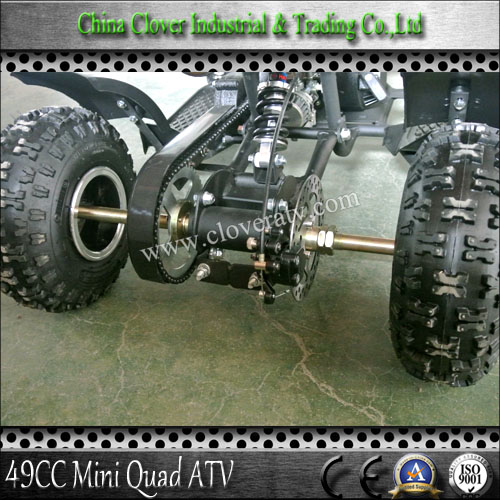 ATVs with electronic fuel injection (EFI) can sense when combustion is off and will alert you by illuminating the check-engine light.
ATVs with electronic fuel injection (EFI) can sense when combustion is off and will alert you by illuminating the check-engine light.The best way to test if gas has gone bad is by using your senses.
Siphon a small amount of the suspected fuel into a clean, see-through container to inspect it. Fill fresh gas into a separate container for comparison.
 With experience, you will be able to smell the difference without smelling fresh gas each time.
With experience, you will be able to smell the difference without smelling fresh gas each time.There is no definite rule for how long gas can be stored or left in the tank before it is no longer good.
Environmental factors such as humidity, temperature, and oxygen exposure all impact how long gas stays fresh and usable.
Also, there is no way of knowing how old the gas you bought at the pump is; it may be fresh or a month or two already.
As a rule of thumb, you’re likely better off not using gas that is older than one year.
However, gas stored in less ideal conditions can degrade quickly and may start showing signs of going bad after only a few months.
On the other hand, gas stored in the rights conditions may be good even after several years of storage.
Old or bad gas needs to be removed from the tank and replaced with fresh fuel. If the tank on your ATV has a drain plug or accessible petcock valve, simply use that to drain the tank completely.
Most modern ATVs do not, however, have an easily accessible drain plug.
In that case, use this method:
Tip 1: On EFI bikes, you may need to run the fuel pump for a couple of seconds for the fuel to drain. Activate the pump by turning the ignition key until the pump starts, but do not turn the key all the way to “run”.
Activate the pump by turning the ignition key until the pump starts, but do not turn the key all the way to “run”.
Tip 2: Another way of draining the tank is by sticking a drain hose and an air hose down into the tank to use compressed air to force the fuel out of the tank. Use rags to seal off the tank opening and gently apply air until fuel start draining out the hose and into a container. Then use a grab-it-tool and some shop rags to mop out the remaining fuel in the tank.
Tip 3: If there is only a tiny amount of bad gas in the tank, adding fresh gas and some Seafoam to clean the carb and fuel lines may be all that you need to do. In some severe cases, you may need to disassemble and clean the carb. Pay close attention to the needle seats and clean the pilot jets. You may need to replace the needles and jets.
Tip 4: The fuel in the carb typically goes bad before the gas in the tank. Use starting fluid to force the ATV to burn through the relatively small amount of bad fuel in the carb and allow fresh fuel to enter.
Before putting your ATV away for the winter, make sure to add a high-quality fuel stabilizer to the tank, such as Stabil or Startron.
Note that fuel stabilizers do not revitalize gas that has already gone bad. It will only aid in keeping good gas fresh longer by slowing down hydrocarbon evaporation.
After adding the stabilizer to the tank, go for a short ride to allow treated fuel to enter the carburetor.
As gasoline is highly volatile and thereby highly flammable, it is never a good idea to store large amounts of gasoline at home. Make sure to store any gas you keep at home in a cool, low-oxygen environment, such as an airtight container designed for fuel storage kept in a cool garage.
Whenever possible, use ethanol-free gas on any vehicle that regularly sits without being used, such as an ATV.
Alternatively, drain ethanol-based gas before storage, and use it in your car.
The gas sold in the summer is not the same as the one sold in winter. Summer gas contains heavier hydrocarbons to prevent premature evaporation, while winter gas contains lighter hydrocarbons to aid combustion through the cold winter months.
The lighter hydrocarbons in winter gas will evaporate quickly in the summer, causing the gas to go bad prematurely.
When your ATV doesn’t start, it can be frustrating, inconvenient, worrying, and confusing. There are so many things that cause an ATV to not respond to your will, so it's good to know the most common reasons for an ATV to not start and the symptoms that will clue you in on the real reason behind your quad’s stubborn refusal to get going.
To start, an ATV needs enough fuel, air, spark, and power in the battery. When any of these things are lacking, your ATV won’t start up.
If these things have been taken care of, there could be a problem with the electrics, such as the kill switch. To work out which of these issues is the most likely, first consider whether the engine is starting at all.
To work out which of these issues is the most likely, first consider whether the engine is starting at all.
Many ATVs won’t start up if they’re in gear as a safety precaution. Double-check that your ride is in park.
OK, though this is the simplest possible answer to your problem, it’s also the most common reason an engine won’t crank up at all. The kill switch, also known as the run switch, should be in the “RUN” or “ON” position. Some ATVs have a kill switch with a tether pull cord, so make sure this is connected correctly before you start taking apart your machine in frustration.
Your ATV won’t start if the battery doesn’t have enough charge. Check the battery using a voltmeter or multimeter. If you’ve somehow completely discharged the battery, you can use a smart battery charger designed for ATVs to bring it back to life. Sometimes, you’ll simply have to replace the battery if it’s past its prime.
Sometimes, you’ll simply have to replace the battery if it’s past its prime.
When you turn the key or hit the start button, you should hear a clicking sound. This clicking sound is the solenoid, which is a switch used to send current to your starter. If it’s not getting power from the battery, your ATV won’t start.
You’ll find the solenoid near the starter. Connecting a multimeter (red to red, black to ground) to the solenoid will show you whether the solenoid is getting power. If not, and your battery is charged, there’s a problem with the wiring or connections between the battery and the solenoid.
Off-road are the core piece of riding gear for ATV & UTV riders
Find out the best look for you
If everything above has been taken care of, your ATV engine should turn over. If it turns over but doesn’t start, we should now consider a potential problem with the fuel, spark, or air systems.
Before you leave for a ride, make sure you keep all basic tools and essential spare parts on board. Discover a range of storage options.
Let’s assume your ATV has adequate fuel and the fuel shut-off valve has not been closed off. Find your spark plug, which is usually behind some protective casing. On a carbureted ATV, remove the spark-plug wire, while on a fuel-injected ATV, remove the ignition coil. To take out the spark plug, use a spark-plug removal tool.
Check to see if the spark plug is dry. If so, the fuel isn’t getting to your cylinder. There is a problem either with the fuel pump or the lines between the gas tank and the carb. This will require finding the location of the problem through a process of elimination and then cleaning.
If the problem lies in the fuel intake system, there are different repair steps for carbureted ATVs and electronic fuel injection ATVs. It will be required to consult your manufacturer’s user guide for details on how to repair the fuel filter, fuel pump, or fuel injector.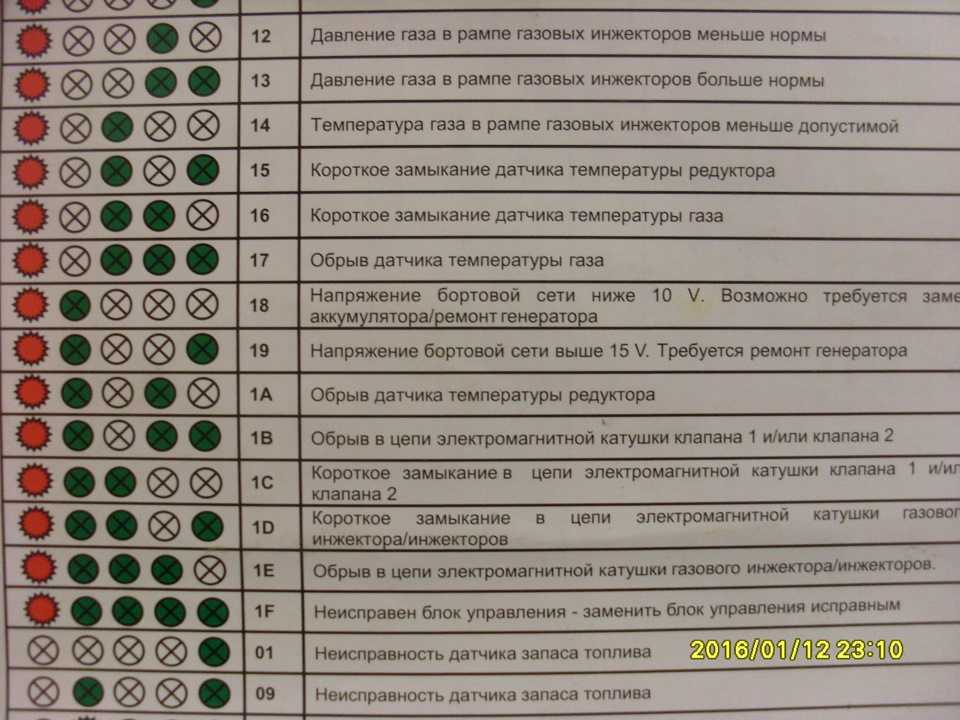
If the spark plug is wet, it may still not be getting enough spark. The easiest way to diagnose this is to use an inline spark tester that fits between the spark plug and the coil/wire. Pressing the starter button should cause the test tool to light up, allowing you to eliminate this as the source of the problem.
If the tool shows there’s a problem with the spark, try testing the kill switch with a multimeter, checking for damaged wires, replacing the spark plug. If none of these relatively simple fixes restores the spark, you may have to replace the ignition coil.
Your gas tank or gas cap will have a small vent for air to enter and escape. As fuel is pumped out of the gas tank, air is pulled in to replace it. If your gas vent is clogged, the fuel pump won’t be able to draw gas from the gas tank.
These are the main reasons an ATV won’t start and how to troubleshoot the issue. Check them all in turn, and you’ll quickly find the root of your problem and have your ATV back on the road in no time.
Check them all in turn, and you’ll quickly find the root of your problem and have your ATV back on the road in no time.
TARGET 20L Camo
32 EUR
22.40 EUR
TRUNK 80L Black
64 EUR
Explore all
Content
New models of ATVs are equipped with an electric starter. Therefore, problems with starting almost never arise. But in older models, 9 can be installed0029 manual kick starter . With him, beginners sometimes have difficulties.
To start the ATV, do the following:
 Also, the ignition switch must be in the "on" position on the control panel.
Also, the ignition switch must be in the "on" position on the control panel. 
Start the CFMOTO 500 with a manual starter?
Watch this video on YouTube
Paradoxically, but sometimes the owners of ATVs simply forget to pour gasoline into the tank. Therefore, before proceeding with the diagnosis, it is worth checking the fuel level.
It is not uncommon for the cause of the problem to be insufficient battery charge . It can be charged at home. If the ATV is small, you can purchase an additional battery. The cost of batteries for budget models is relatively low.
How to start an ATV?! If the battery is dead!? Life hacks! Subscriber reply | Irbis Atv 250s | SJ8Pro
Watch this video on YouTube
If the battery is good, but the starter does not work, it may be worth looking for the cause in the starting system.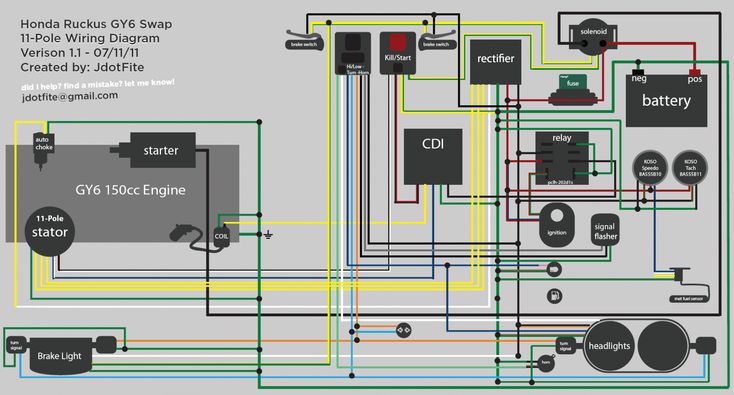 It is necessary to try to close the contacts, which are located on the starter relay. To do this, you need to use a screwdriver. The relay is usually located under the seat. Two thick wires are connected to it.
It is necessary to try to close the contacts, which are located on the starter relay. To do this, you need to use a screwdriver. The relay is usually located under the seat. Two thick wires are connected to it.
If you need to find a way to start the ATV without a key, you can also follow these steps. This technique will be effective only if the system is not controlled by the central computer . Otherwise, blocking will work.
If, after the manipulations, the engine starts up, then the problem is in the launch system . Otherwise, you will need to look for the cause of the malfunction further or visit a service center.
Each ATV has a stop button on the steering wheel. Usually it is red. This button is responsible for turning off the ignition, it turns off the engine . If you do not bring it to its previous position, the engine, of course, will not start. Therefore, it is worth checking in what position the "Stop" button is located.
Another security system provided in ATVs is a special check. This is a cable that is attached to the ATV at one end and to the driver at the other. If the latter falls off the ATV while driving, check flies out and the ignition turns off. You won't be able to start the vehicle without this receipt either. If this part is lost, you will need to look for the appropriate contacts and close them directly.
Another possible reason why the ATV won't start is a blown fuse. If the ATV is small, there is usually only one fuse. He is located next to the battery . The suitability of this part for operation can be assessed visually. The cost of the fuse is cheap, so it is better to have several of these parts in stock.
If there is no spare fuse, and the failure happened away from home, you can insert wire instead. This is a temporary solution that will allow you to get home. It is impossible to constantly replace the fuse with wire. You can burn much more expensive elements of the system.
It is impossible to constantly replace the fuse with wire. You can burn much more expensive elements of the system.
This part is located under the saddle or next to the motor (depending on the model). It's a small box with wires coming out of it. They are connected to the ignition coil. It is difficult to assess the health of this part, so it is better to contact a service center with a similar problem.
If the spark plug wire is broken or the ignition coil is broken, it will not be difficult to check the performance of these systems. The candle is unscrewed and inserted into the candle cap. Next, you need to attach it with the metal side to the engine and press the starter button. If there is no spark between the electrodes, this is a sign of a breakdown. Try cleaning the spark plug electrodes and adjusting the gap between them.
If there is a spark, then the problem lies either in the candle cap or in the candle.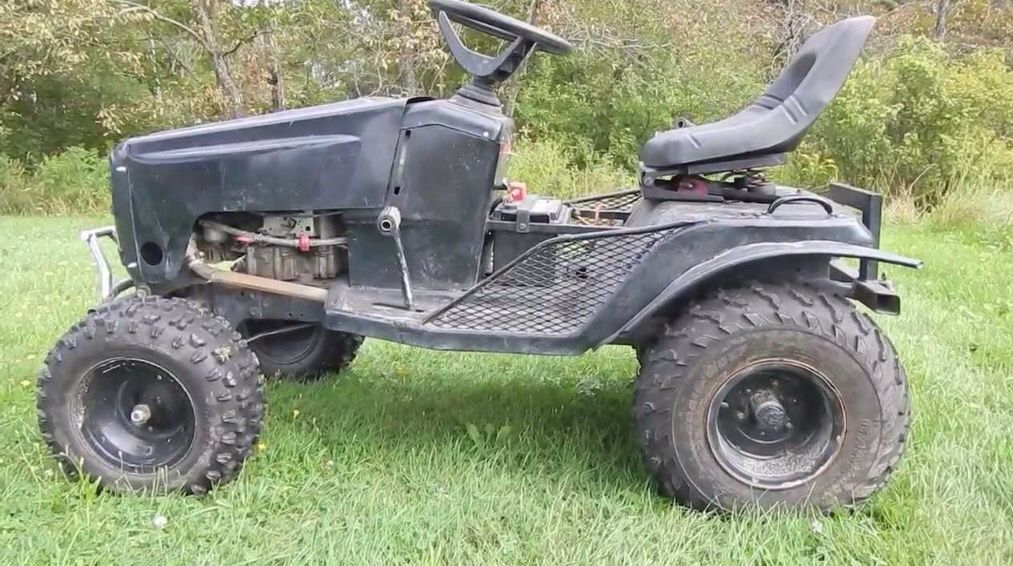 You need to buy a new part and change it.
You need to buy a new part and change it.
It will be possible to eliminate many malfunctions and start the ATV even in the forest. For models with a manual transmission, you can try to start the engine from the pusher. It should be said right away that this cannot be done with an automatic transmission. In other cases, it is recommended to look for the cause of the breakdown according to the points listed above.
How to start an ATV with a PUSHER
Watch this video on YouTube
If the car does not start, you need to immediately determine the reasons that adversely affect the engine start. And for this it is necessary to systematize and reduce the number of options for engine operation problems. Is the motor problematic running "cold" or "hot"? Does the engine run on gasoline or diesel fuel? Answering these questions will help reduce the number of causes of poor engine performance.
Why does the engine start badly? You need to understand the root cause!
With half a turn, it is possible to start only perfectly tuned types of engines with a carburetor or mechanical injection of the first generations, which do not have any electronics in their composition. In all other cases, the engine control unit must interrogate the sensors and, after analyzing their signals, give a command to apply a spark.
It takes a few turns of the engine with the starter. In case of malfunctions, the process is delayed, which greatly irritates the owner of the car. In such cases, there is a problem with starting the vehicle. It is necessary to separate the factors that negatively affect the start of a gasoline and diesel engine.
A gasoline engine differs from a diesel engine primarily in the presence of spark plugs. Not to be confused with glow plugs. That is, in order for the gasoline engine to work as expected, it is necessary to ignite the fuel-air mixture with a spark from a spark plug.
The main reasons why a car does not start well when cold are:
This factor of poor engine starting is widespread! Frost leads to accelerated discharge of batteries.
Solution:
Advice! If you doubt whether the vehicle will start in the cold due to a “run down” battery, then you should understand that the battery will have the strongest charge only when you first try to start the engine. From the moment the car is opened with a key fob, processes that consume electricity are launched in the system, so it is important to act quickly!
The highest probability of starting a vehicle with a dead battery is:

The second, frequent case is a low level of sparking.
This may happen for the following reasons:
In this case, it is necessary to identify the causes and eliminate the source of the malfunction that prevents the vehicle from starting with a cold engine.
Solution:
It is enough to replace the candles and check all connections of the ignition system.
For a novice motorist, a difficult start on a hot one looks like something supernatural. Why is the engine hard to start? Literally half an hour ago I started the car with a pinch, a hot engine is provided, but now the car will not start! Miracles, and nothing more. No magic - banal mechanics and physics. If the car does not start hot, then the reason may be a malfunction of a sensor. Incorrect operation of one sensor can cause engine failure as a whole.
No magic - banal mechanics and physics. If the car does not start hot, then the reason may be a malfunction of a sensor. Incorrect operation of one sensor can cause engine failure as a whole.
When carrying out maintenance, it is necessary to check the operability and condition of the sensors. Their incorrect operation is often a problem due to which the engine does not start well when hot. When carrying out the replacement procedure, use means for mounting electrical contacts, they can reduce the risk of failure.
You can use Electronic-Spray wiring spray.
There is no philistine method for evaluating fuel quality. You have to use indirect signs, for example, a bad plant after refueling at an unverified gas station. At the same time, while your car does not start, there is a big chance to land the battery, "kill the candles", clog the injector and even destroy the engine in case of improper detonation.
If it does not start well on a hot engine, the reason is probably an unsuccessful refueling. The solution to this problem is the use of additives in the gas tank that improve the main indicators of gasoline.
The solution to this problem is the use of additives in the gas tank that improve the main indicators of gasoline.
To protect yourself from the consequences of refueling with low-quality fuel and keep the injector in good condition, we recommend that you always keep on hand the long-term injector cleaner Langzeit Injection Reiniger for gasoline engines and the long-term diesel additive Langzeit Diesel Additiv for diesel engines.
It is recommended to use these fuel additives when refueling at untested gas stations, as well as on highways.
In winter, with a large temperature difference, a possible cause of problems such as icing on the air filter. Lack of air is also a reason that does not allow the car to start. In this case, it is recommended to immediately replace the air filter at the first sign of malfunction. The procedure is quite simple and does not require special skills.
IMPORTANT! One of the key factors provoking a poor cold start of a vehicle can be the wrong engine oil.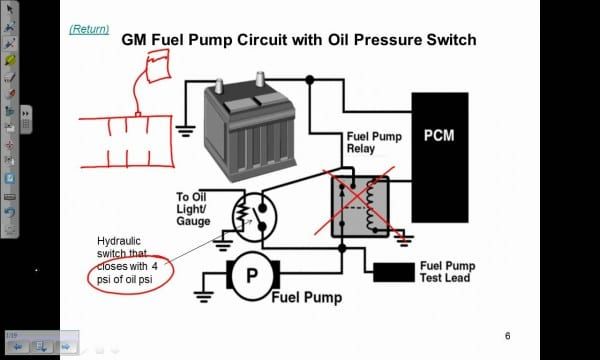 If you filled in oil with a viscosity of 10W-XX and higher, and severe frosts hit, the oil thickens and its pumpability in a cold system drops sharply, which leads to significant engine wear at start-up; As a result, the car won't start.
If you filled in oil with a viscosity of 10W-XX and higher, and severe frosts hit, the oil thickens and its pumpability in a cold system drops sharply, which leads to significant engine wear at start-up; As a result, the car won't start.
In winter, it is important to choose only high-quality oils from trusted manufacturers, as this ensures that the oils comply with the declared “behavior” parameters in the cold.
The diesel engine is distinguished by the absence of spark plugs and the principle of compression ignition. Often the car will not start, because the diesel engine is very picky about the quality of fuel, especially when driving in winter.
That is why you can protect yourself by using special depressant additives, in common people - antigels. Such additives prevent freezing of diesel fuel during the cold period. The range of such additives is wide, it is recommended to choose products from well-known manufacturers that have proven their effectiveness and safety. One of the leaders in tests and consumer reviews is the product of a well-known German brand, the company LIQUI MOLY Diesel anti-gel Diesel Fliess-Fit. The product is distinguished by a high degree of fuel modification and absolute safety for the fuel equipment of a diesel engine.
One of the leaders in tests and consumer reviews is the product of a well-known German brand, the company LIQUI MOLY Diesel anti-gel Diesel Fliess-Fit. The product is distinguished by a high degree of fuel modification and absolute safety for the fuel equipment of a diesel engine.
The second significant problem is low compression in a diesel engine. Low compression can be caused by:
If only a major overhaul will help with the first problem, then the second problem is solved by high-quality prevention. During operation, carbon deposits, sludge and varnish contamination are formed inside the engine. The process is inevitable, over time a situation arises when soot does not allow compression rings to work correctly. The compression drops, the pressure becomes insufficient to ignite the fuel mixture.
Prevention of such problems consists in the use of special flushes of the oil system, which allow the removal of carbon deposits. One of the best products for this is Oilsystem Spulung High Performance Diesel. The composition of the flush is designed specifically for use in a diesel engine, which allows you to achieve the maximum effect from the application.
One of the best products for this is Oilsystem Spulung High Performance Diesel. The composition of the flush is designed specifically for use in a diesel engine, which allows you to achieve the maximum effect from the application.
3 SIMPLE STEPS TO AVOID MOST STARTING PROBLEMS
One of the main problems in Russian conditions that cause poor starting of the vehicle is the quality of Russian fuel and the consequences of its use: deposits in the fuel system, clogging of nozzles, injectors, etc.
To prevent such vehicle problems, we recommend:
